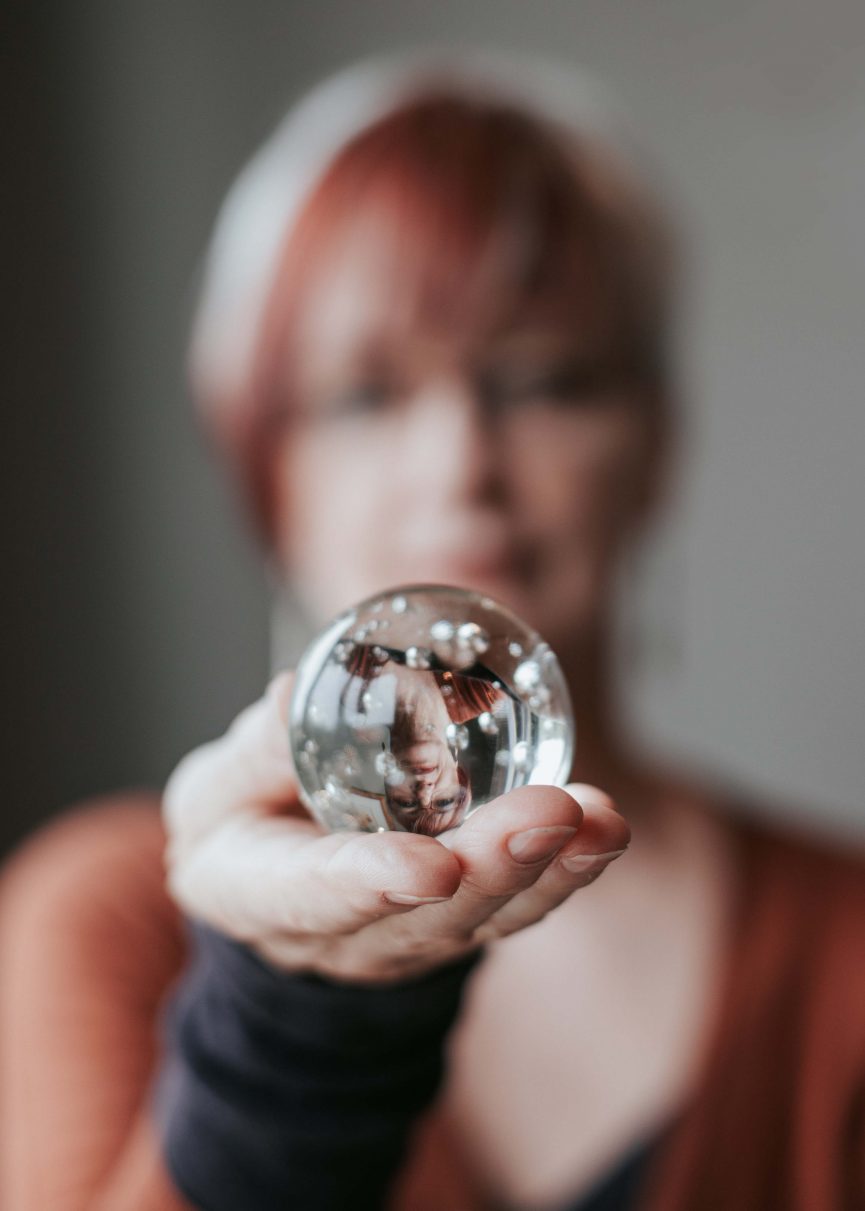Most of the time, because we are left hemispheric dominant, what we see is only part of what is actually present. This way of seeing enables our survival, supporting us to make the choices that get us about in the world. The left hemisphere of our brain, it has been said, comprises between ten to twenty percent of our whole brain function, according to Dr Bruce Lipton, it comprises only four percent! Who knows for sure? I don’t, but as an artist, I do experience the other aspect of our brain, the right hemisphere, and its capacity to see, hear and feel what is present in a broader sense. Everyone else does too.
Our two hemispheres process information in very different ways. According to Iain McGilchrist in his 2009 book “The Master and his Emissary”, the left processes everything pertaining to the self and its survival and the right processes everything else. Our right hemisphere, let’s call it RH, processes and stores experiences as they arise through the senses and then instantaneously passes on its ‘findings’ to the left for an evaluation. LH (left hemisphere) then makes a prediction about the next step to be taken, by referring to the past i.e. what it already knows. Our capacity to make evaluations based on past experience and predict the future, enables us to set goals and achieve outcomes ensuring our survival.
Over eons of time humans have evolved to be left hemispheric dominant. We can spend eighty to ninety percent of our waking lives in LH. This means we spend more time referring to the past and projecting into the future (me too!) and less time being present to what is authentic around us moment by moment. Our right hemispheric state is fragile by nature, partly because it is so under-utilised, but also because it is has a limited capacity to process verbal information and we live in an information oriented world. It is primarily a seeing, feeling state that in our modern world, is easily interrupted.
LH, sees by scanning visual information (the world you experience) in a linear way. It focuses on one thing, then the next thing, so you can make a judgement about how to act. It tends towards a utilitarian approach to the world – that’s an apple; I can eat it. Is this one ok to eat, what about those spots? I’m not eating that, it has a disgusting worm in it! That person has a bigger, better apple than mine; I want one like theirs. This capacity to discern, compare and evaluate serves us by ensuring our survival.
Your right hemisphere sees with a global eye; everything, at the same time, every shape, colour, contour and tone in existence. It is aware of the whole, the subtleties, all the components and the relationships between them. Your right hemisphere is more focused on the innate quality of the experience than how it may be used.
If you didn’t have art tuition and tried to draw beyond the age of ten, you may have become very frustrated with your attempts. You were drawing from your left hemisphere which simply doesn’t see all the visual information. You knew the drawing was inauthentic because your right hemisphere processes visual information. You have been seeing with your global eyes since birth. You have an extensive visual ‘vocabulary’ (including complex perspective!) stored in the unconscious depths of your right hemisphere, which you can’t retrieve through memory. You can however learn to apply the strategies and techniques which enable you to consciously set right hemispheric processing into motion.
You unconsciously activate RH on a regular basis. When you see a beautiful sunset, you stop in your tracks and just look; you gaze at it with awe and wonder, you are fully present, without any awareness of yourself. This capacity serves you as well, enabling mindfulness, empathy, creativity and connection. Life would be less fulfilling without it.
Because I’m an artist and art coach I have an interest in the nature of the whole brain. I know that when I teach adult beginners how to draw, they will be processing with both hemispheres in different ways. The left hemisphere supports students to understand new techniques and to make choices about how to progress to the next step. It is LH that makes the choice to allow the shift to its silent partner. It is LH that remembers and evaluates the experience it has had in that non-verbal, sensate state and chooses to activate it again. As your left hemisphere becomes more familiar with consciously letting go of itself, it can become a faithful supporter and intrinsic part of the creative process. Seeing is believing (and the other way round).

